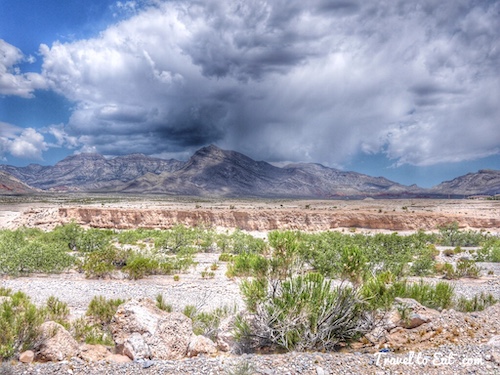
It has started to get hot in Las Vegas, as it always does this time of year, and because we had a visitor, we decided on a trip to Mount Charleston. Fortunately for us, Mount Charleston is just 35 miles northwest of Las Vegas where you can find cool mountain breezes, fresh air and all-around scenic beauty. Part of the Spring Mountain Range and Toiyabe National Forest, Mount Charleston ranges from 3,000 to 12,000 feet in elevation. It is Nevada’s eighth-highest mountain peak and one of the Top 10 most topographically prominent peaks in the United States. With trees like juniper, mountain mahogany, Aspen and Ponderosa pine and animals such as wild burros, songbirds, deer and desert tortoises, Mount Charleston feels like it is a million miles away from Las Vegas.
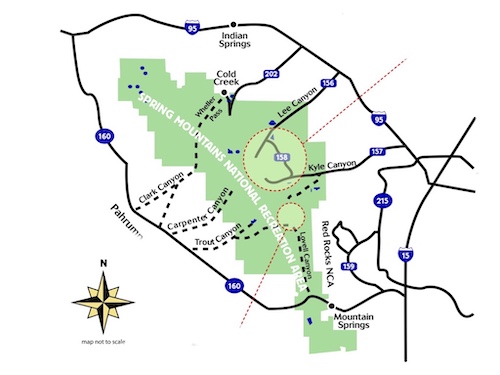
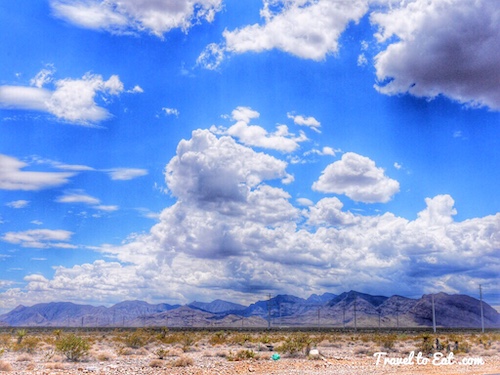
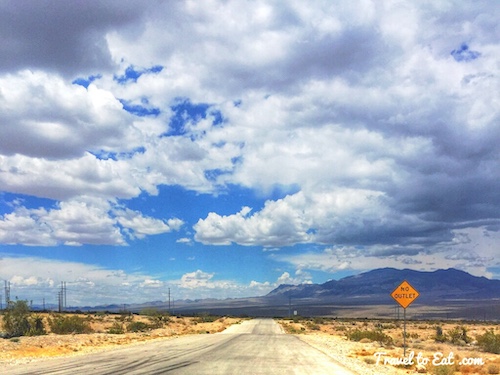
To get to Mount Charleston, you take Interstate 215 to 95 and then turn on Kyle Canyon road, the turnoff is just outside Las Vegas. The clouds in the sky were particularly beautiful the day we went as you can see in the above pictures. Usually in Las Vegas we have blue skies with few clouds. The elevation of Las Vegas at the airport is about 2200 feet (665 m) while in Henderson, where we live, is about 2400 feet (730 m). Summerlin, built near Red Rock Park and the Charleston Mountains has an elevation of about 3500 feet (1065 m) and is thus about 10 degrees F cooler than Las Vegas. The peak of Mount Charleston is about 12,000 feet (3633 m) while the Mount Charleston Lodge is at about 7500 feet (2286 m). It was about 108 F (it’s a dry heat) when we left home and when we turned onto Kyle canyon road it was 103 F. When we arrived at the Mount Charleston lodge at 7500 feet, it was about 75 degrees F, the drop in temperature due to the change in elevation, which is the real reason it is a favorite of locals.
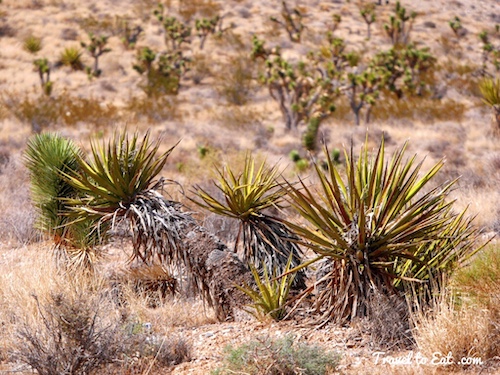
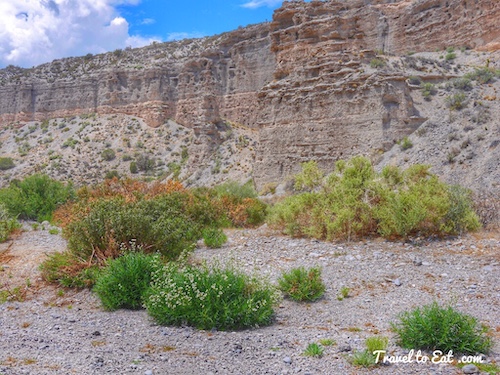
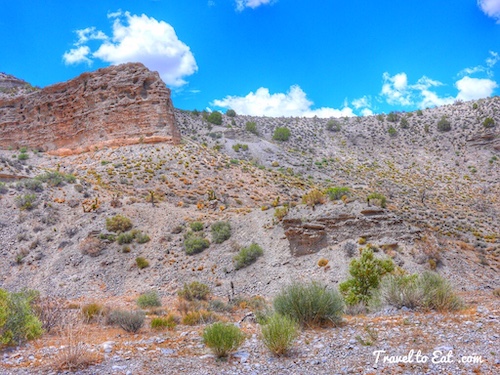
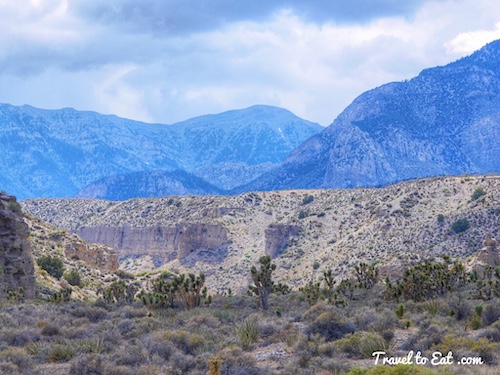
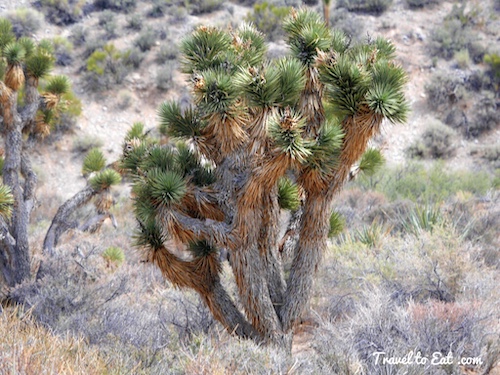
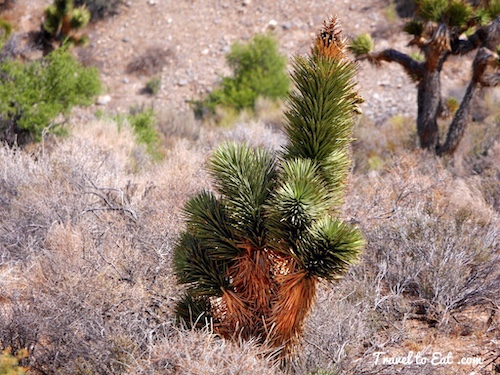
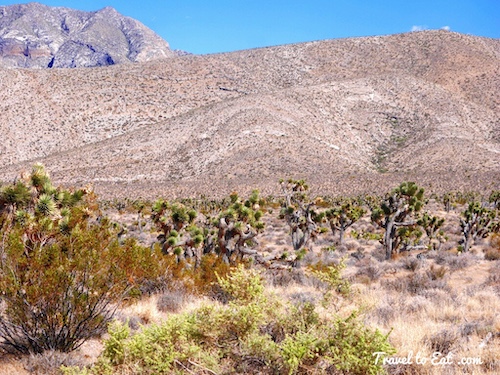
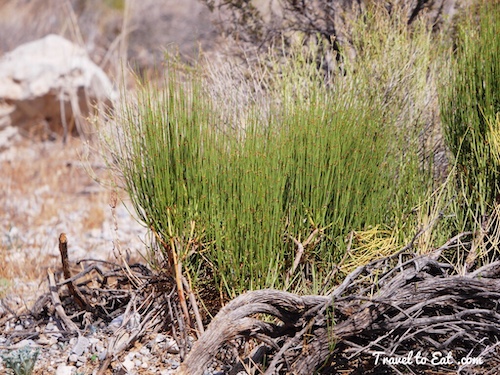
As we went up in altitude along Kyle Canyon Road, the vegetation slowly changed from mostly brown and yellow scrub to more interesting and green vegetation as seen above. As we came to the right altitude and moisture levels, Joshua trees came next, expanding into a forest on both sides of the highway. I happen to love Joshua trees, the name given by a group of Mormon settlers who crossed the Mojave Desert in the mid-19th century. The tree’s unique shape reminded them of a Biblical story in which Joshua reaches his hands up to the sky in prayer. Yucca brevifolia is a plant species belonging to the genus Yucca. It is tree-like in habit, which is reflected in its common names: Joshua tree, yucca palm, tree yucca, and palm tree yucca. It is hard to believe that Joshua trees are in the same family as the Mojave Yucca. The drug ephedrine, an antidepressant and decongestant, is made from Ephedra viridis and other Ephedra species. A tea can be made by boiling the stems, explaining the common name “green Mormon tea”.
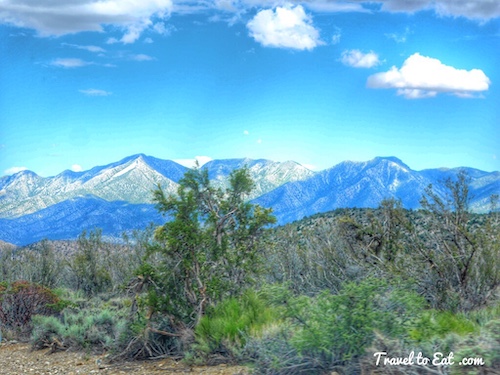
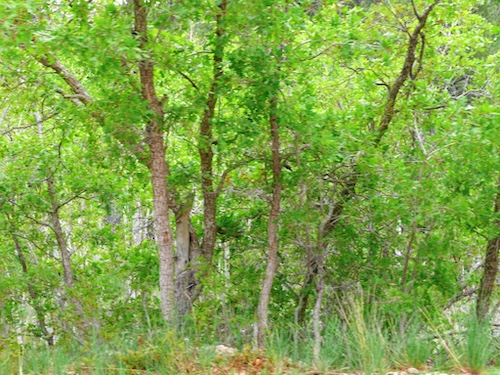
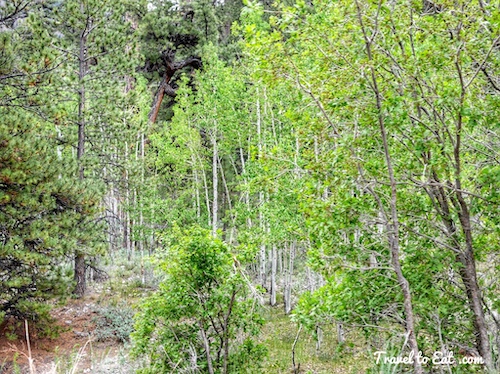
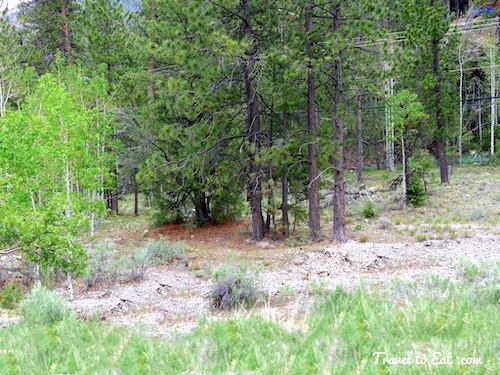
As we climbed even higher, we began to see Pinyon pines and then Aspen, Ponderosa Pines and Fremont’s Cottonwood along the stream bed. Populus tremuloides is a deciduous tree native to cooler areas of North America, one of several species referred to by the common name Aspen. It is commonly called quaking aspen, trembling aspen, American aspen, Quakies, mountain or golden aspen, trembling poplar, white poplar, popple, and even more names. Just about everyone loves Aspen in the fall, when they show their colors but I like them just fine in the summer, a cool spot with lovely sights and sounds. In January 1884, while camped near Pyramid Lake in current-day Nevada, Fremont first described the tree that would come to bear his name. He noted the sweetness of the bark, which, like that of the Plains Cottonwood, horses sometimes preferred to grass. Later that same year, while in the San Joaquin Valley in California, Fremont again described a good camping spot with a fine stream flowing through it and large cottonwoods standing beside it. He took samples of the cottonwood back with him and his name became permanently connected with the willow.
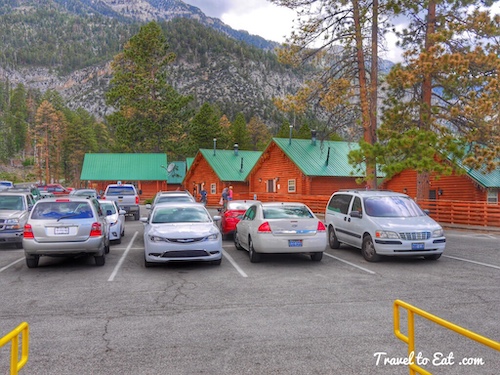
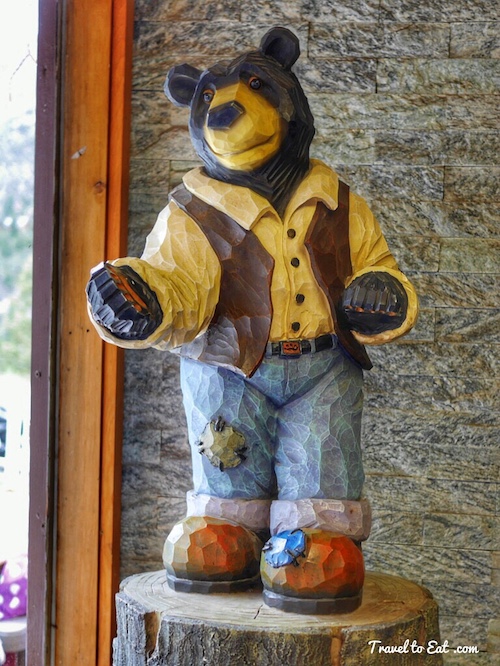
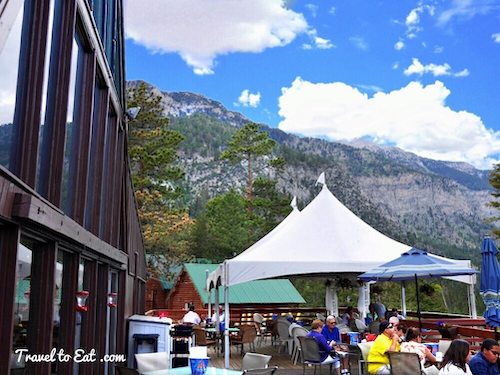
Located in Kyle Canyon at more than 7,000 feet, the 24 log cabins at Mount Charleston Lodge provide comfort for those seeking a more modern refuge without giving up the outdoorsy feel entirely. Each cabin comes with an outdoor deck and a fireplace. The restaurant at the lodge offers breakfast, lunch and dinner daily both inside and on the deck overlooking Kyle Canyon. They have mainly mountain food; nachos, Wings, burgers, salads and pizza although they do have an elk burger on the lunch menu. They are particularly known for their ingenious cocktails which are beautiful to look at and delicious to drink.
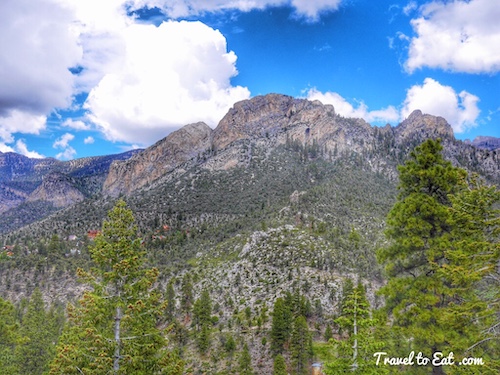
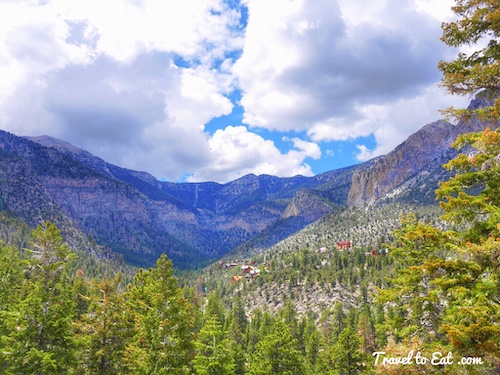
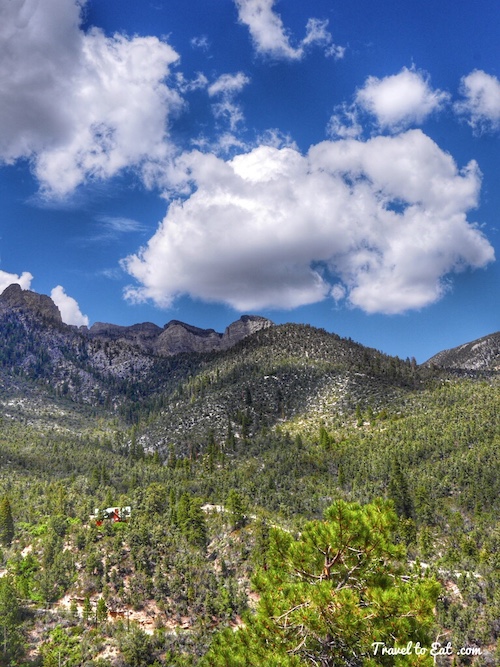
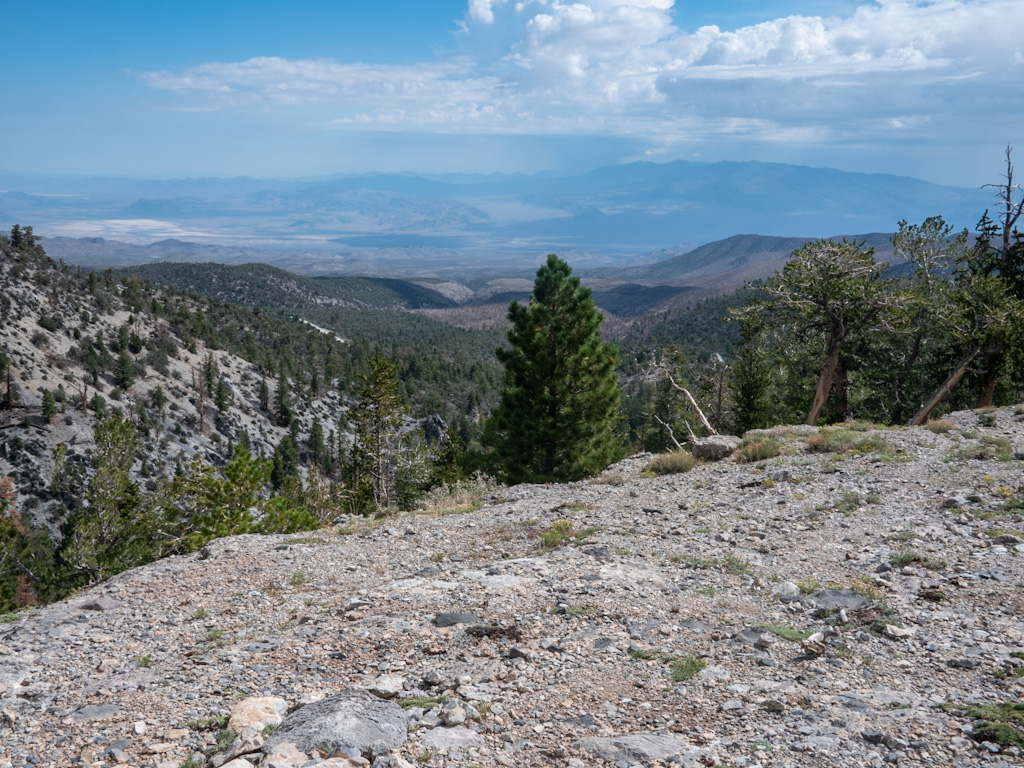
If you visit Las Vegas, consider a trip to Mount Charleston to escape the heat and take in the views.
[mappress mapid=”102″]
References:
Succulents of the Mojave: http://offroadinghome.djmed.net/resources/plants.htm
Native Trees and Bushes of Nevada: http://www.nps.gov/grba/learn/nature/treesandshrubs.htm
Red Rock Canyon Visitor Guide: http://www.snellpress.com/rrcvg/rrcvg-samples/red-rock-canyon-visitor-guide-trees.pdf
Fremont’s Cottonwood: http://mojavedesert.net/trees/cottonwood/
Mount Charleston Lodge: http://mtcharlestonlodge.com/
